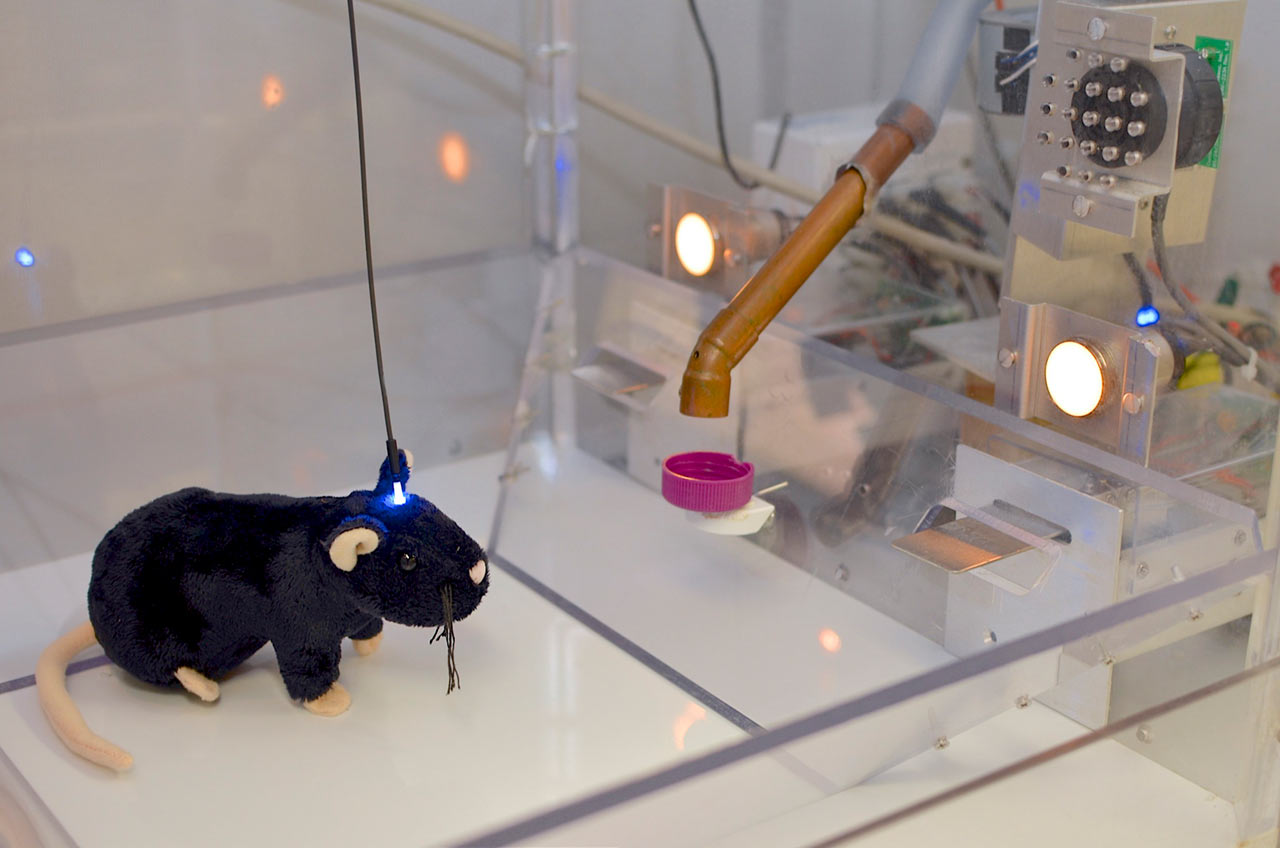An operant conditioning chamber permits scientists to study behavior conditioning by teaching an animal to perform certain tasks (e.g., pressing a lever) in response to specific stimuli (e.g., light or tone signal). When the animal correctly performs the behavior, it will result in the delivery of food or other type of reward. Using this behavioral apparatus, the Sombers Lab studies the neurochemical mechanisms of various behaviors, including impulsive decision making and drug or natural reward self-administration.
The open field test (OFT) is an experiment used to assay general locomotor activity levels. Using this behavioral apparatus coupled with state-of-art FSCV techniques, the Sombers Lab studies the neurochemical mechanisms of motor deficits associated with neurodegenerative diseases, such as Parkinson’s disease, as well as cocaine-induced locomotor activity.
The rotarod performance test is a performance test based on a rotating rod with forced motor activity being applied, usually by a rodent. The test measures parameters such as riding time (seconds) or endurance. Some of the functions of the test include evaluating balance, grip strength and motor coordination of the subjects.
Conditioned place preference (CPP) is a form of Pavlovian conditioning used to measure the motivational or reinforcing effects of drugs.

